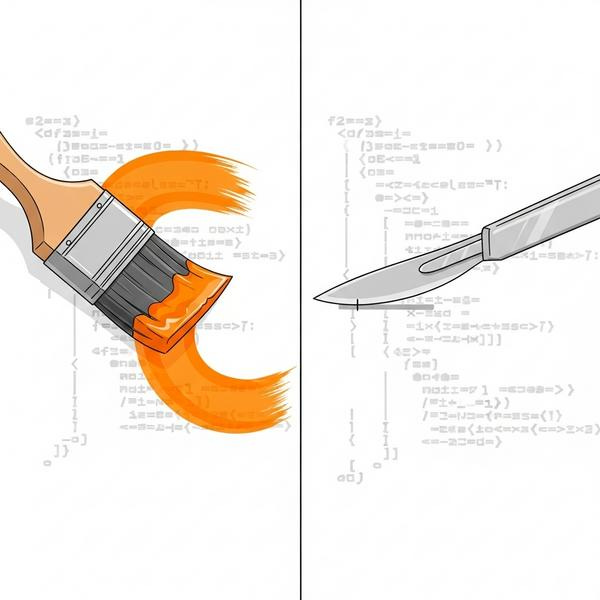When AI Needs a Scalpel, Not a Paintbrush
TL;DR: Most developers are using AI wrong—treating it like both a paintbrush and a scalpel when it’s really only good at one. 78% report productivity gains, but 76% don’t trust the output. The fix? Use “vibe coding” for building new features (80% of your work), and “surgical strikes” for precise edits (20%). Know which mode you’re in, and your AI frustration drops to zero.

I watched it happen in real-time during a consultation with Scott, a sharp founder expanding his product. He’d built a sleek component using Lovable weeks earlier—worked perfectly. Now he wanted to change simple placeholder text. Should’ve taken thirty seconds.
Instead, his natural language prompt triggered Lovable to rewrite the entire component. What should’ve been a scalpel edit became a sledgehammer overhaul. The UI nearly broke.
That’s when it clicked: we’re not just using AI wrong. We’re using the wrong mental model for when AI should drive versus when we should.
The Precision Paradox Nobody’s Talking About
Here’s the contradiction killing developer confidence right now: 78% of developers report productivity gains from AI tools, with 17% claiming outright 10x increases. But 76% remain in a “confidence red zone” because of frequent hallucinations.
Think about that tension. Three-quarters of developers are more productive but trust their tools less than a coin flip.
The gap isn’t about the technology failing. It’s about mismatched expectations. We’re asking AI to be both the paintbrush and the scalpel—and getting frustrated when it picks wrong.
I’ve seen this at scale. At Amazon, we built systems serving millions of users. The moment someone confused broad architectural work with surgical precision, deployments broke. Same pattern, different tools.
Keep reading with a 7-day free trial
Subscribe to Travis Sparks - Sparkry.AI + Neurodivergence + Business to keep reading this post and get 7 days of free access to the full post archives.

